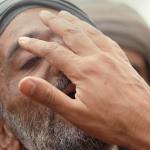
I want to call this new article to your attention: Neal Rappleye and Stephen O. Smoot, “Stephen Burnett versus the Eight Witnesses: An Exercise in Mature Historical Thinking,” Religious Educator 25/2 (2024). Stephen Burnett has long been a favorite weapon among critics of the Church of Jesus Christ of Latter-day Saints, often deployed (especially by the secularist variety of critics) against the credibility of not only the Eight Witnesses to the Book of Mormon but even that of the Three Witnesses. Does Burnett’s testimony merit such trust?
Abstract: This article critically examines the credibility of the claims made by Stephen Burnett about the experience of the Eight Witnesses of the Book of Mormon. A disaffected Latter-day Saint who lost his faith in Joseph Smith after the failure of the Kirtland Safety Society in 1837, Burnett wrote a scathing letter in early 1838 in which he claimed he heard Martin Harris admit that the Eight Witnesses did not physically see and handle the gold plates as claimed in their printed testimony. This article argues that Burnett is not a credible source for accurately understanding the experience of the Eight Witnesses. It uses Burnett’s letter and the controversy surrounding it as an example of how students can develop mature historical thinking skills when they are confronted with potentially faith-damaging information.

(LDS Media Library)
An article recently appeared in the Deseret News by the invaluable Latter-day Saint social scientist Stephen Cranney: “Liberal-leaning churches are shrinking compared with many conservative churches: Membership data across faiths challenges those who argue that alignment with progressive ideals is the pathway to vibrancy for religious communities today”
What Brother Cranney has to say in his article reminds me of a still rather famous 1972 book — still famous in certain circles, anyway — by the late Dean M. Kelley,
In 1969 Peter Berger told the New York Times that religious people would soon be huddled together in little enclaves, surrounded by a sea of secularity. In doing so, he was simply making explicit the philosophy of history implicit in social theory since its founding. According to this philosophy, Christianity became Protestant, then liberal Protestant, then vaguely and privately spiritual, moving inevitably towards secularism. In the 60s and into the 70s the data on American religion seemed to support this story – at least in mainline churches. First published in 1972, this book directed attention to the surprising and theoretically problematic fact of growing conservative churches, precisely those churches that were most demanding and seemingly ill-equipped for the modern world. As secularization and modernization theory crumbled with the resurgence of conservative religion in public life in the US and around the world (see Jose Casanova’s Public Religions in the Modern World), it became clear that conservative religion was not going away quietly and that social science had been dead wrong. Kelley was among the first to recognize that there was something mistaken with social science’s predictions of a secular future. His book was part of a dramatic, if belated, recognition among scholars that lots of Americans find conservative, strict Churches profoundly attractive.

Public domain image via Wikimedia Commons
I close with a passage that I marked while reading Alejandro Agudo, Eduardo Jorge Fulco, and Titus Rivas, “Comments on the Results of the AWARE II Study,” Journal of Near-Death Studies 41/1 (2023): 9-22. The authors, based respectively in Spain, Argentina, and The Netherlands, are responding in it to the same reports of unexpected electrical activity in two dying brains to which, as I previously mentioned here, Pim van Lommel and Bruce Greyson have also responded. (See the latter portion of my recent blog entry “Bread of Life, Living Water.”) They describe the work to which they are responding as “certainly” “a well-executed study” (19), but, like Drs. van Lommel and Greyson, they caution against an overhasty physicalist or reductionist misreading of its results:
Parnia et al. are correct to ask themselves, in the paragraph just analyzed, not only whether the electric activity found is sufficient to generate lucid consciousness and flawless memory but also whether there is a causal relationship between such activity and NDEs. Again, without data on the EEGs of people who have had an NDE, it is impossible to know. But even if such data existed, a temporal coincidence would not imply a causal relationship, either in the sense that NDEs could be caused by the neural activity or in the sense that neurological activity would be caused by NDEs. In fact, alternative interpretations have already been presented, such as the one formulated by Hameroff and Chopra (2010) or the theory proposed by Mays and Mays (2011) that the electric activity in question could indeed mirror the liberation of a non-physical consciousness from its link to the brain.
Finally, aside from the results of the AWARE II study, which related to consciousness during CPR, it is clear that the well-documented cases of NDEs that occurred before resuscitation began or that included veridical perception of events occurring outside the patient’s physical environment and were confirmed by third parties, such as those collected extensively in the book The Self Does Not Die (Rivas et al, 2023), would remain unexplained. (18-19)
Posted from Depoe Bay, Oregon

















